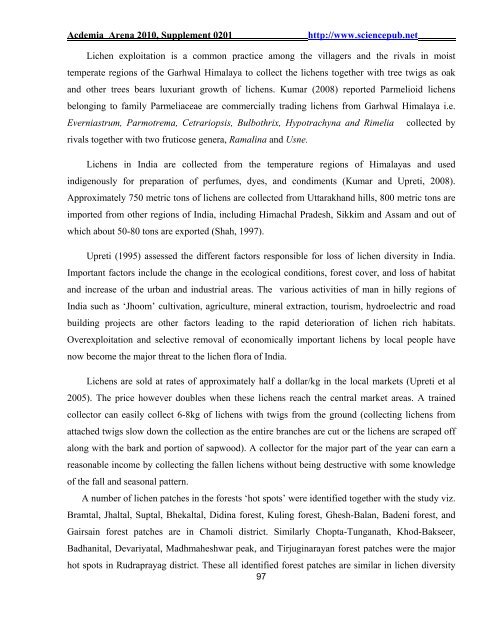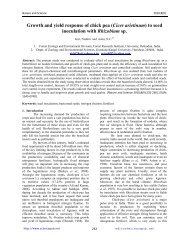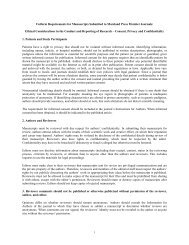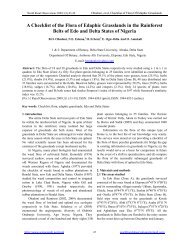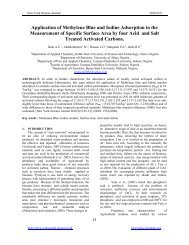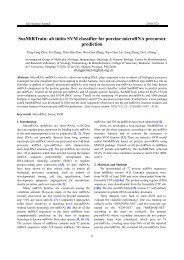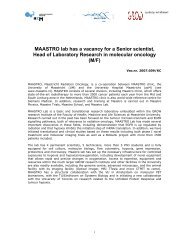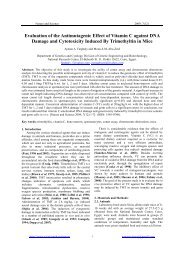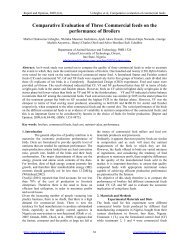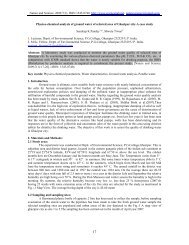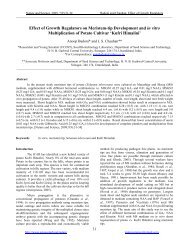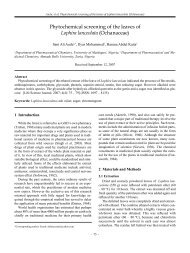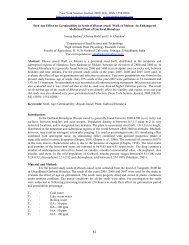Ecological, Social and Commercial Role of Lichens in India with ...
Ecological, Social and Commercial Role of Lichens in India with ...
Ecological, Social and Commercial Role of Lichens in India with ...
You also want an ePaper? Increase the reach of your titles
YUMPU automatically turns print PDFs into web optimized ePapers that Google loves.
Acdemia Arena 2010, Supplement 0201<br />
http://www.sciencepub.net<br />
Lichen exploitation is a common practice among the villagers <strong>and</strong> the rivals <strong>in</strong> moist<br />
temperate regions <strong>of</strong> the Garhwal Himalaya to collect the lichens together <strong>with</strong> tree twigs as oak<br />
<strong>and</strong> other trees bears luxuriant growth <strong>of</strong> lichens. Kumar (2008) reported Parmelioid lichens<br />
belong<strong>in</strong>g to family Parmeliaceae are commercially trad<strong>in</strong>g lichens from Garhwal Himalaya i.e.<br />
Everniastrum, Parmotrema, Cetrariopsis, Bulbothrix, Hypotrachyna <strong>and</strong> Rimelia collected by<br />
rivals together <strong>with</strong> two fruticose genera, Ramal<strong>in</strong>a <strong>and</strong> Usne.<br />
<strong>Lichens</strong> <strong>in</strong> <strong>India</strong> are collected from the temperature regions <strong>of</strong> Himalayas <strong>and</strong> used<br />
<strong>in</strong>digenously for preparation <strong>of</strong> perfumes, dyes, <strong>and</strong> condiments (Kumar <strong>and</strong> Upreti, 2008).<br />
Approximately 750 metric tons <strong>of</strong> lichens are collected from Uttarakh<strong>and</strong> hills, 800 metric tons are<br />
imported from other regions <strong>of</strong> <strong>India</strong>, <strong>in</strong>clud<strong>in</strong>g Himachal Pradesh, Sikkim <strong>and</strong> Assam <strong>and</strong> out <strong>of</strong><br />
which about 50-80 tons are exported (Shah, 1997).<br />
Upreti (1995) assessed the different factors responsible for loss <strong>of</strong> lichen diversity <strong>in</strong> <strong>India</strong>.<br />
Important factors <strong>in</strong>clude the change <strong>in</strong> the ecological conditions, forest cover, <strong>and</strong> loss <strong>of</strong> habitat<br />
<strong>and</strong> <strong>in</strong>crease <strong>of</strong> the urban <strong>and</strong> <strong>in</strong>dustrial areas. The various activities <strong>of</strong> man <strong>in</strong> hilly regions <strong>of</strong><br />
<strong>India</strong> such as ‘Jhoom’ cultivation, agriculture, m<strong>in</strong>eral extraction, tourism, hydroelectric <strong>and</strong> road<br />
build<strong>in</strong>g projects are other factors lead<strong>in</strong>g to the rapid deterioration <strong>of</strong> lichen rich habitats.<br />
Overexploitation <strong>and</strong> selective removal <strong>of</strong> economically important lichens by local people have<br />
now become the major threat to the lichen flora <strong>of</strong> <strong>India</strong>.<br />
<strong>Lichens</strong> are sold at rates <strong>of</strong> approximately half a dollar/kg <strong>in</strong> the local markets (Upreti et al<br />
2005). The price however doubles when these lichens reach the central market areas. A tra<strong>in</strong>ed<br />
collector can easily collect 6-8kg <strong>of</strong> lichens <strong>with</strong> twigs from the ground (collect<strong>in</strong>g lichens from<br />
attached twigs slow down the collection as the entire branches are cut or the lichens are scraped <strong>of</strong>f<br />
along <strong>with</strong> the bark <strong>and</strong> portion <strong>of</strong> sapwood). A collector for the major part <strong>of</strong> the year can earn a<br />
reasonable <strong>in</strong>come by collect<strong>in</strong>g the fallen lichens <strong>with</strong>out be<strong>in</strong>g destructive <strong>with</strong> some knowledge<br />
<strong>of</strong> the fall <strong>and</strong> seasonal pattern.<br />
A number <strong>of</strong> lichen patches <strong>in</strong> the forests ‘hot spots’ were identified together <strong>with</strong> the study viz.<br />
Bramtal, Jhaltal, Suptal, Bhekaltal, Did<strong>in</strong>a forest, Kul<strong>in</strong>g forest, Ghesh-Balan, Badeni forest, <strong>and</strong><br />
Gairsa<strong>in</strong> forest patches are <strong>in</strong> Chamoli district. Similarly Chopta-Tunganath, Khod-Bakseer,<br />
Badhanital, Devariyatal, Madhmaheshwar peak, <strong>and</strong> Tirjug<strong>in</strong>arayan forest patches were the major<br />
hot spots <strong>in</strong> Rudraprayag district. These all identified forest patches are similar <strong>in</strong> lichen diversity<br />
97


